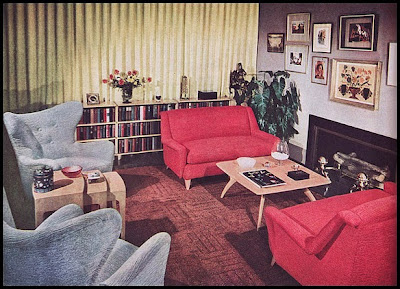One of the questions that sometimes comes up in conversations I have with people is, why niche? Isn't designer a big enough pool to swim in? With all the releases since the early sixties, and all the classics that have endured the ages, you would think the need to spend more money for fragrances by independent entities with vague reputations would be unnecessary. After all, there's a designer scent out there for everybody, right? Maybe, but that misses the point.
The reality is stark: niche fills a niche. Designer perfumes are made for the masses; niche fragrances cater to subsets of the designer populace who want specific experiences that popular choices do not always offer. If you want a great citrus chypre with bold fruit and orange blossom notes, buy and wear Eau Sauvage. It's very mainstream, and classically French. But what about an Egyptian spin on Eau Sauvage? Which designer delivers that?
I'm sure there's a brand out there that does, but good luck finding it. Andy Tauer, an independent perfumer with no affiliation to any designer overlord, offers a straight-up oriental variant on the fresh chypre theme with his beautiful re-release of L'eau d'épices, a colossal achievement in perfumery if ever there was one. It is rumored that L'eau was inspired by Tauer's own Christmas-countdown fan club soap, Mandarins Ambrés. Evidently it was a fresh-floral citrus scent with a good labdanum note, about as posh as soap can get. When I read about this, I thought it sounded good, but my initial reaction to L'eau d'épices was negative. It contains a very strong neroli note, and at first I wondered if it was just another neroli-on-steroids snoozer in the same vein as Tom Ford's Neroli Portofino, Amouage Reflection Man, and Perry Ellis Portfolio Green.
I needn't have worried. Though the orange blossom elements abound, there are subtle complexities to the fragrance's three-tiered structure of white flowers, Indian spices, and resinous amber. What is remarkable about L'eau is its Egyptian jasmine note, a little fleck of delicate white beauty to complement the neroli. It smells rich, a little sweet, and morphs the neroli into a new flower, something stunning and nameless as it dries down. The heart brims with labdanum, very dark and a little animalic, a classical anchor to the airier notes that precede it. Buttressing the petals are cinnamon, coriander (not urinous, thankfully), and a mighty eugenol-fueled clove that escapes dentist associations by being singed in hot clay, an allusion to desert and ancient sands.
The base of woody amber, mainly Ambroxan and a bit of Ambreine, is very direct and full, but not isolated into a monochrome skin-scent due to L'eau's intense concentration of floral top notes, which permeate the entire life of this perfume. Wearing L'eau d'épices on a warm spring day creates a new answer to the question at the start of this post. Niche perfumes like L'eau bring a new level of complexity, sophistication, and technical skill to the table in ways that most designer scents, even those super-busy everything-but-the-kitchen-sink masculine powerhouses of the late eighties and early nineties, never could. Part of this is attributable to Mr. Tauer's considerable skill. He is simply very, very good at what he does. The other determining factors are patience, and an expansive budget. I can tell that this perfume was made with very high quality naturals and synthetics.
L'eau made its early appearance back in 2007 and 2008, when little samples were offered to friends and fans, and the perfume was properly released in 2010. Eventually it became difficult to source the supplies for making it, and it was discontinued. Its discontinuation awakened potential buyers, who suddenly wondered what they'd missed, and apparently wanted the scent back. As Andy noted in an interview published on Fragrantica, "We all want what we can't get."
Andy spent the better part of three years gathering the quality materials that make this fragrance so captivating, and he reissued it in March to critical acclaim. The density of its spices, the headiness of its floral notes, and the smoothness of its ambery base all reveal the unhurried commitment he has to the finished product, and I'm grateful that he has given the world another chance to enjoy this scent. When you work for yourself and create perfumes to fit exotic dreams and ideals and not a brand image, you have the power and freedom to create and sustain amazing things, and that is manifestly the case with L'eau d'épices. This creation is a joy to behold.








